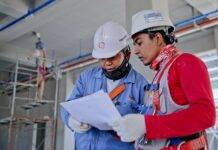
What are the 5 Classifications of Hazard?
What are the 5 Classifications of Hazard? : In a world full of risks and uncertainties, understanding and classifying hazards are crucial for maintaining safety and minimizing potential harm. Hazards come in various forms, and being able to categorize them is essential for risk assessment and management. In this article, we will delve into the five classifications of hazard, shedding light on their nature, significance, and how they impact our lives.
1. Introduction
Hazard classification is a fundamental aspect of risk management. It involves the process of identifying and categorizing potential threats and dangers that can cause harm to people, property, or the environment. These categories help organizations and individuals make informed decisions about safety measures and preventive actions.
2. Understanding Hazard Classification
2.1. What is Hazard Classification?
Hazard classification is the systematic grouping of hazards based on common characteristics. These characteristics may include the type of danger, the severity of potential harm, and the circumstances that can lead to the hazard’s occurrence. By classifying hazards, we can create a standardized approach to risk assessment and mitigation.
3. The Importance of Hazard Classification
Hazard classification plays a pivotal role in various sectors, including workplace safety, environmental protection, and public health. Without a clear understanding of hazards and their classifications, it would be challenging to develop effective safety measures, emergency response plans, and regulations.
4. The Five Classifications of Hazard
4.1. Physical Hazards
Physical hazards are hazards that can cause harm through their physical properties. These include various forms of energy, such as heat, electricity, and radiation. Physical hazards also encompass dangers like machinery, noise, and temperature extremes.
4.2. Chemical Hazards
Chemical hazards involve the presence of hazardous substances that can harm living organisms or the environment. These substances can be in the form of gases, liquids, or solids. Common examples include toxic chemicals, flammable materials, and corrosive agents.
4.3. Biological Hazards
Biological hazards stem from living organisms such as bacteria, viruses, and fungi. These hazards can lead to diseases, infections, and allergic reactions. Biological hazards are often encountered in healthcare settings and food industries.
4.4. Ergonomic Hazards
Ergonomic hazards result from factors related to the design of workplaces, equipment, and tasks. They include issues like poor workstation ergonomics, repetitive movements, and heavy lifting, leading to musculoskeletal disorders and injuries.
4.5. Psychosocial Hazards
Psychosocial hazards are associated with the psychological well-being of individuals. Factors such as workplace stress, harassment, and bullying fall into this category. These hazards can lead to mental health issues and affect overall job satisfaction.
5. Factors Influencing Hazard Classification
Several factors can influence the classification of a hazard. These factors include the context in which the hazard occurs, its severity, and the potential for harm. Additionally, technological advancements and scientific discoveries can lead to the reclassification of certain hazards.
6. How to Identify and Mitigate Hazards
Identifying and mitigating hazards are crucial steps in the risk management process. Employing hazard assessments, safety protocols, and personal protective equipment can help reduce the likelihood of accidents and injuries.
7. Legal Implications of Hazard Classification
Understanding hazard classifications is not only essential for safety but also for legal compliance. Many countries have regulations that require organizations to classify and manage hazards appropriately. Failure to do so can result in legal consequences.
8. The Role of Safety Standards
Safety standards are established to provide guidance on hazard classification and mitigation. Organizations often follow industry-specific standards to ensure their practices align with the best safety measures.
9. Conclusion
In conclusion, understanding the five classifications of hazard is a vital component of risk management and safety. By categorizing hazards into physical, chemical, biological, ergonomic, and psychosocial categories, we can effectively identify, assess, and mitigate potential threats. This knowledge not only safeguards individuals and organizations but also contributes to a safer and healthier environment.
What is the Difference between EHS and HSE?
What are the Important Points of HSE?
10. FAQs
10.1. What is the purpose of hazard classification?
Hazard classification serves the purpose of categorizing potential threats and dangers to facilitate risk assessment and management. It helps organizations and individuals make informed decisions about safety measures and preventive actions.
10.2. Can hazards belong to multiple categories?
Yes, some hazards can belong to multiple categories. For instance, a hazardous chemical can pose both chemical and physical hazards, depending on the circumstances.
10.3. How can I assess and mitigate physical hazards?
To assess and mitigate physical hazards, one should conduct a thorough evaluation of the physical properties and energy sources involved. Implementing safety measures, such as guarding equipment and providing training, can help reduce physical hazards.
10.4. What are common examples of chemical hazards?
Common examples of chemical hazards include toxic chemicals, flammable materials, corrosive substances, and hazardous gases. These substances can cause harm to humans, the environment, or both.
10.5. How do psychosocial hazards affect workplaces?
Psychosocial hazards can affect workplaces by causing stress, harassment, and bullying. They can result in decreased employee well-being, job satisfaction, and overall workplace morale.
























